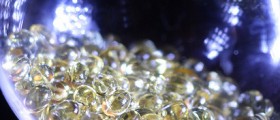
Sunshine On A Daily Basis
Getting daily dosages of Vitamin D has been linked to numerous health benefits by clinical research. Consequently, insufficient amounts of Vitamin D in the body cause different kinds of health problems. Individuals with particularly low amounts of the sun vitamin are at an increased risk of suffering from heart illnesses over a period of a decade compared to persons, with adequate levels of Vitamin D. One of the main reasons for Vitamin D deficiency is the lack of sunshine or not enough time spent outdoors. Further, individuals who live in most places on the Northern hemisphere are unable to get sufficient amounts of Vitamin D during the winter as the sun does not climb high enough in the sky for enough rays to get in through the atmosphere. On the other hand, in the summer it is advised that people spend the right amount of time outside in order to absorb as much UV-B rays as is enough to produce Vitamin D reserves. Skin cells are the agents that convert sun rays into Vitamin D. For those who have light skin 10 minutes a day in shorts and a tank top is usually satisfactory to take in enough sun. During the amount of time necessary to absorb the sun no sunscreen should be used. Persons who have dark skin, as well as senior individuals, produce Vitamin D slower and need to spend more time outdoors. In addition, other good sources of Vitamin D include milk and fatty fish, and those should be consumed in the winter to decrease the risk of developing heart problems related to the vitamin deficiency.Risks of Vitamin D Deficiency
There are general guidelines as to how much of the Vitamin D needs to be taken on a daily basis but it is recommended that individuals consult with nutritionists to assess their personal needs and get the most health benefits. Other than heart problems, Vitamin D also defends against different types of cancers such as colon, breast, and prostate. Advancement of bone diseases such as arthritis and osteoporosis can also be prevented by adequate amounts of Vitamin D. Diabetes and multiple sclerosis are other diseases that could develop as a result of Vitamin D insufficiency. Lastly, the sun shields against depression, sleep problems such as insomnia, and overactive immune system. Vitamin D increases the production of calcium and in turn protects the teeth and bones. Another important function is to regulate the cells in the body which leads to stable insulin production and immune function. Healthy cells decrease the risk of both infections and cancer. It should also be noted that the majority of people suffer from Vitamin D deficiency and most are unaware of this fact. One of the first reasons why people became Vitamin D deficient was migration from the Equator towards the poles where the sun is not as strong. Those who left Africa and inhabited the areas where there was plenty of fish compensated for the lack of sun and maintained adequate levels of Vitamin D for normal functioning. In today’s day and age starting at the mid-20th century, the outdoor labor was replaced by indoor work while the skies began to darken with pollution reducing the amount of sun rays that reach the skin.Vitamin D With The Sun
There are plenty of messages in the media warning the public about the risks of exposing the skin to the sun so many people are covering up uncontrollably and preventing themselves from Vitamin D absorption. There are even research studies that show that more deaths are caused by Vitamin D deficiency disorders than from illnesses related to overexposure to the sun. Experts from Australia agree that if the UV index is 3 or less no sunscreen is required. Instead, people can spend as much time outside as they wish without wearing long sleeves or pants. Consequently, the sunrays will be absorbed and Vitamin D produced without exposing the skin to any adverse effects. Further, it is difficult to estimate the exact amount of time that needs to be spent outside, as everyone’s needs are different. Also, individuals with different types of skin pigmentation require different amount of sun rays in order to benefit. As already mentioned, fair skinned persons only need about 10 unprotected minutes in the sun while those naturally dark skinned require about 15 to 20 minutes. In order to take in enough sun individuals need to spend the specified amounts on time outside during midday, when the sun is the highest in the sky and best able to penetrate the atmosphere. Persons of African need about one hour of unprotected sun exposure to reach the same effects, which is about six times more compared to fair skin individuals. Spending time in a sunny room or driving a car during midday does not allow the skin to absorb the UV-B rays. Taking a walk during lunch hour is the most beneficial way to go.
















Your thoughts on this
Loading...